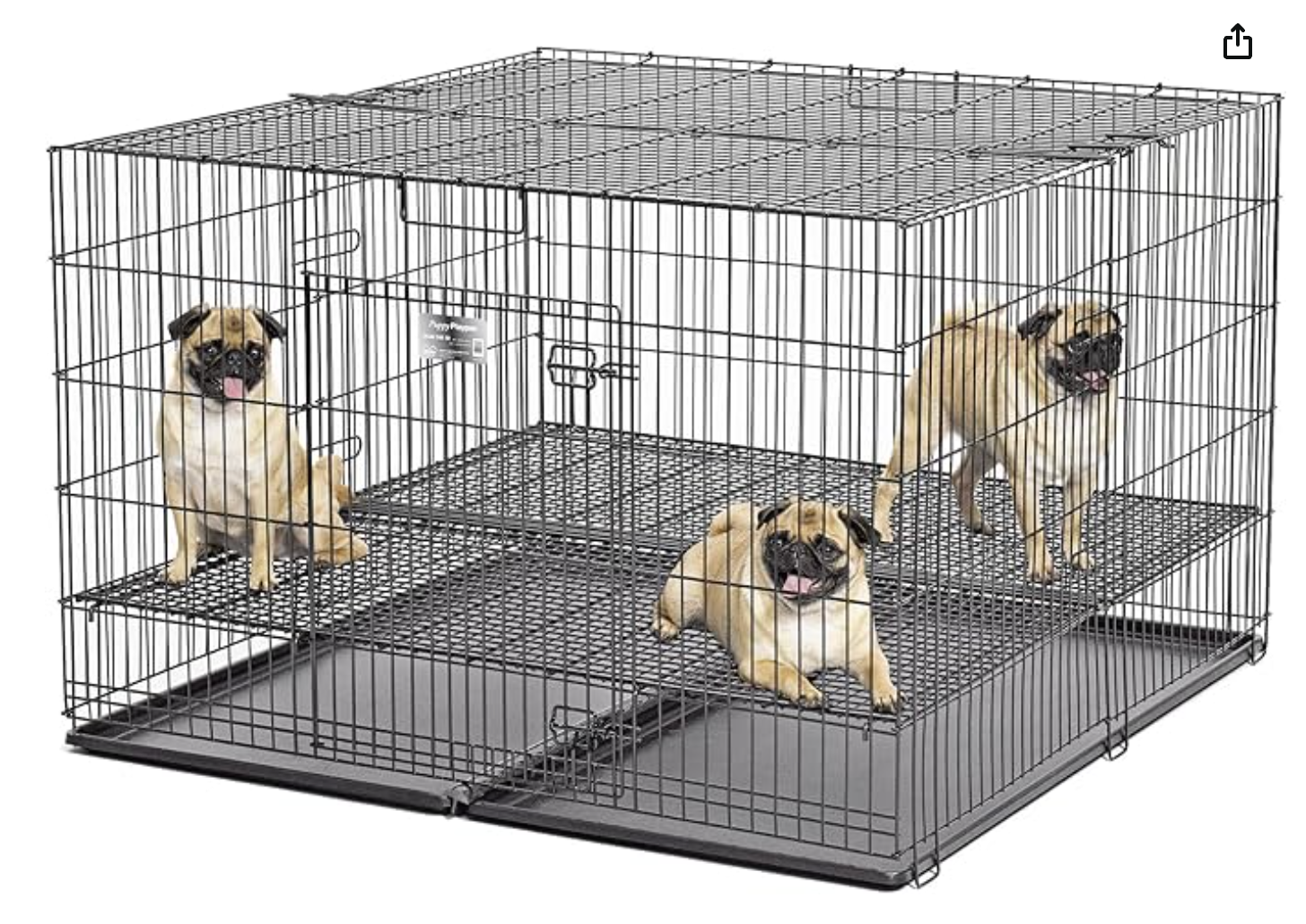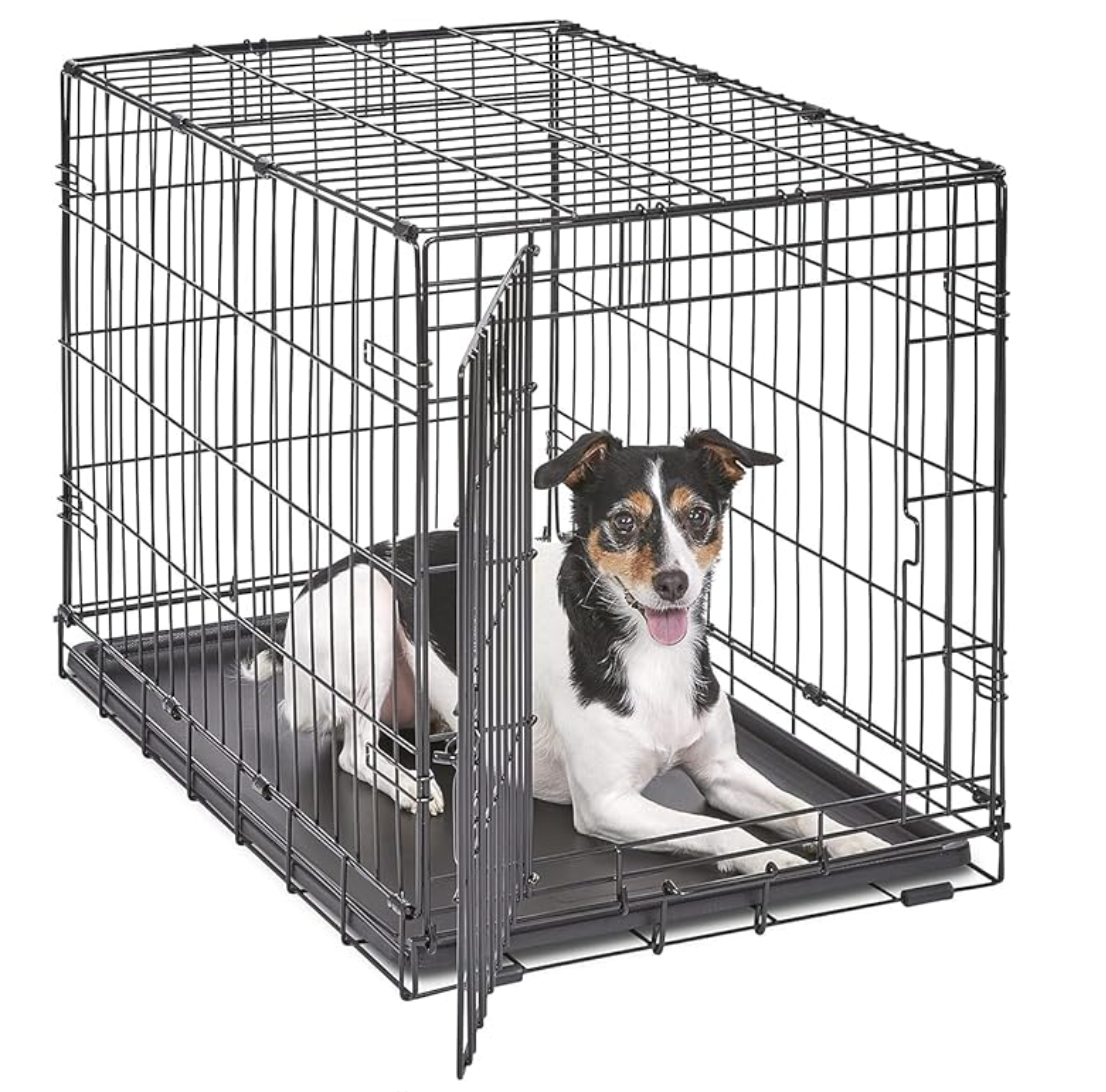Kennel and Crate Recommendations
CRATE TRAINING
When it comes to training your puppy you will find an abundance of information from different trainers, online sites, books and breeders. There is no one right method to listen to or advice to follow. What we advise here may not be the same as what you research elsewhere but the advice we give is simply what we have seen work best in our many years of raising puppies. With our history of happy, healthy and well behaved puppies out in the world we fully believe you will have great success by following our tips and tricks to crate training. Crate Training is one of the most efficient and effective ways to train a puppy. It creates a safe place for your puppy, helps build routine, establishes healthy independence and is a great tool for potty training.
Kenneling Overnight
The single most important thing to realize at first when bringing a new puppy home is that your puppy will whine overnight in its kennel. This response is completely normal and the severity will depend on your puppies age. Older puppies are more removed from their littermates and mother and are less inclined to whine as much or for a longer period. What you as a new puppy owner needs to know is that your puppy slept through the night fine here at our kennel. All of their needs are met and they are simply crying out of immaturity and being placed in a new strange environment. Unless your puppy needs to potty (see potty training section) there is no need or reason to get up multiple times in the night to hold and comfort your puppy. If you tend to your puppy multiple times a night this lets the puppy know that their whining is eliciting a response and they are more likely to continue and not grow out of it. Typically whining will last for the first three nights. Three seems to be the magical number when 95% of puppies will stop whining when following the above steps. Final tips on kenneling overnight would be to find a good location for the kennel. Since whining is often unavoidable we highly recommend finding a spot out of sight and out of mind. This prevents any unnecessary stress to you and your family members being kept up for potentially three nights in a row! Spots we recommend are: living room, laundry room, kitchen, basement and lastly a climate controlled garage. If you end up keeping the crate in the future when your puppy is older try to put it in a spot now where you could see it being long-term. The most common spot that you should avoid would be a family members bedroom. We want to create a healthy independence and kenneling in a bedroom can lead to your puppy having an unhealthy attachment to an individual person or lead to anxiety from being alone.
Kenneling During the Day
Kenneling during the day can be used as a tool to give yourself a break from your puppy and also your puppy a break from you! Typically kenneling during the day should be kept to a maximum of three hours at a time to reduce the chance of your puppy having an accident. Best times to kennel a puppy during the day is when you are stepping out of the house for periods of time. This prevents the puppy from having accidents or being left unattended alone in the home. If you have a family with young children you can also use the kennel for scheduled rest times for your puppy when you feel your puppy needs a break. Puppies need lots of sleep and in a busy or large household this can be a necessity.
Final Tips
- Kennel/Crate should be sized appropriately for your puppy to have just enough room to stand up and turn around. Larger crates can lead to a higher chance of accidents if your puppy has more room to roam. Larger crates with a divider are ideal as you can increase the space as your puppy grows.
- Kennel should not be overloaded with blankets, pillows and toys. One pad or blanket and a really fun toy/chew that your puppy only gets when kenneled is sufficient.
- Kennel should not be used as a punishment as we want your puppy to look forward to going into their kennel. You may give a treat every time your puppy successfully kennels to encourage this.
- Make sure to potty your puppy before and after every time they are kenneled. Crate training is a tool to teach your puppy how to hold and control bowel movements.
- Confinement to a room or area of the house is not crate training.
- A blanket or covering over the kennel can help a puppy feel more relaxed and secure.
- Crate training should not be used for excess periods of time.
Our Recommendations:




